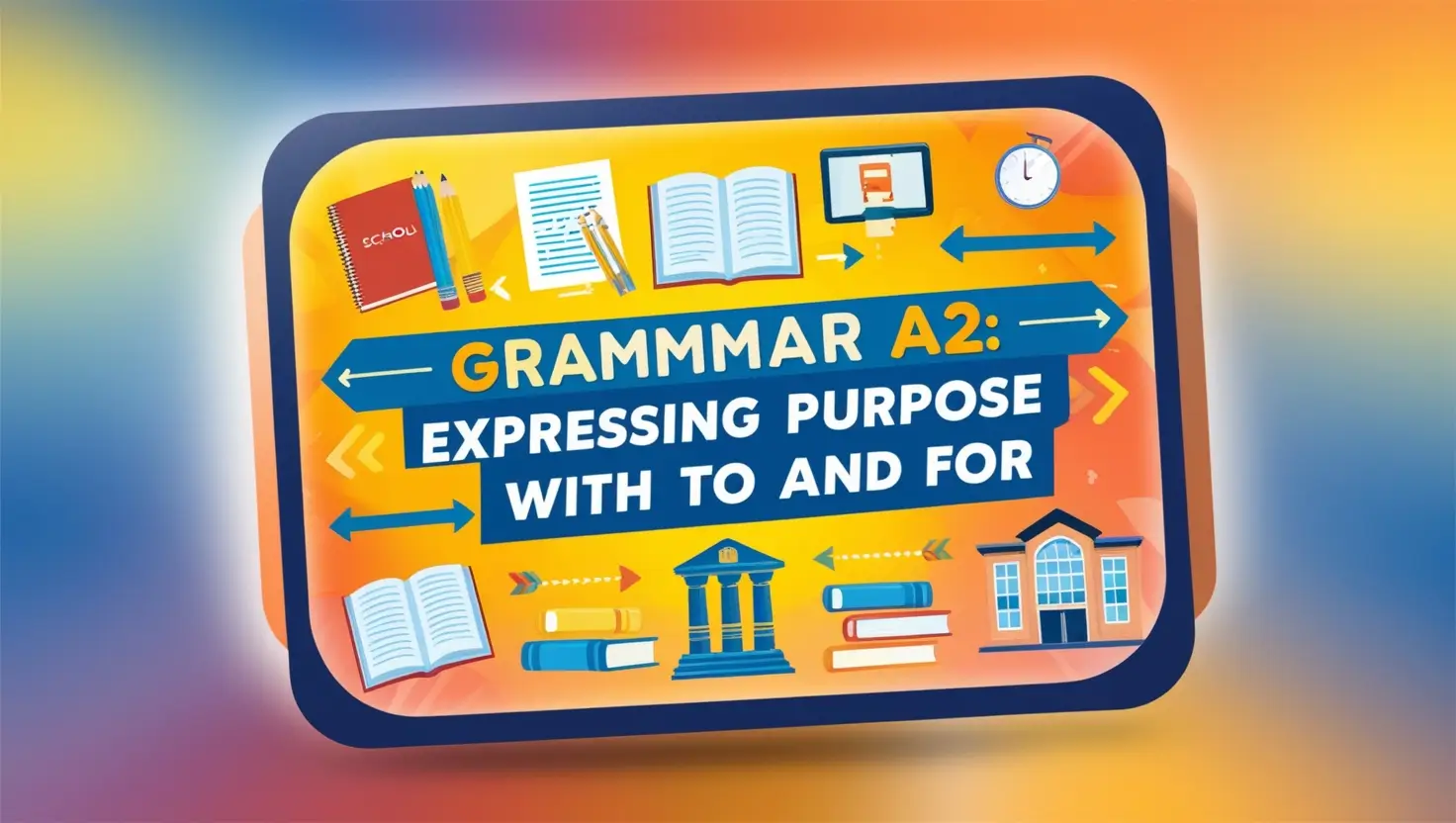Expressing Purpose with 'to' and 'for'
- Home ›
- Grammar ›
- A2 Pre-intermediate ›
- Expressing Purpose with '...




Complete the sentences below with to and for.
Choose the correct forms to express purpose.
Fill in the gaps with to + infinitive, for + -ing or for + noun. In each gap, use to or for and the word/s in brackets.

- 23 December, 2024
- 855
- Grammar
- A2 Pre-intermediate
Expressing Purpose with 'to' and 'for'
In English, we use to + infinitive and for + noun or -ing form to explain the purpose of an action or object. Understanding the correct usage helps you communicate intentions or functions clearly.
Using to + Infinitive
The structure to + base verb (infinitive) is commonly used to indicate why an action is performed.
I went to the library to study.
I went to the library for study.
- Correct: She works hard to succeed.
- Incorrect: She works hard for succeed.
Using for + Noun
The structure for + noun indicates the purpose or recipient of an action.
This gift is for you.
This gift is to you.
- Correct: They bought flowers for their teacher.
- Incorrect: They bought flowers to their teacher.
Using for + -ing Form
We use for + -ing form when talking about the purpose of an object or its general function.
This tool is for cutting wood.
This tool is to cut wood. (when discussing function)
- Correct: These gloves are for gardening.
- Incorrect: These gloves are to garden.
Common Errors and Tips
1. Avoid for + base verb
Using for directly with a base verb is incorrect when expressing purpose.
He left early for finish his project.
He left early to finish his project.
2. Use for when indicating a recipient
When the intention is about who or what benefits from an action, for is appropriate.
This book is for my friend.
This book is to my friend.
3. Know when to use to for purpose
To is always followed by the base form of the verb and focuses on the reason behind an action.
We exercise to stay healthy.
We exercise for stay healthy.
Practice Exercises
- Choose the correct option: She joined a gym (to / for) lose weight.
- Rewrite the sentence: This pen is to writing notes. (Correct it)
- Fill in the blank: He studies hard ___ pass the test.
Understanding these distinctions will improve your fluency and accuracy in English, especially when explaining intentions or purposes.
Unfortunately, we currently do not have teaching materials available on this topic. We are working with all our efforts to prepare it. You can subscribe to Verbooze to be notified once the teaching materials are ready.




English Learning Made Easy & Accessible for Everyone
Boost your English skills with interactive lessons, grammar explanations, reading and listening exercises, and real-time feedback. Join our growing community and start improving today — all completely free!

